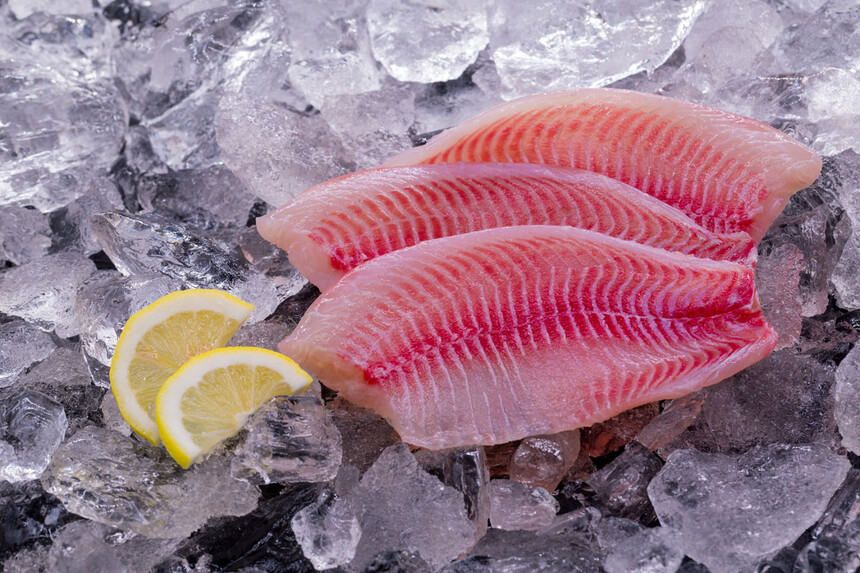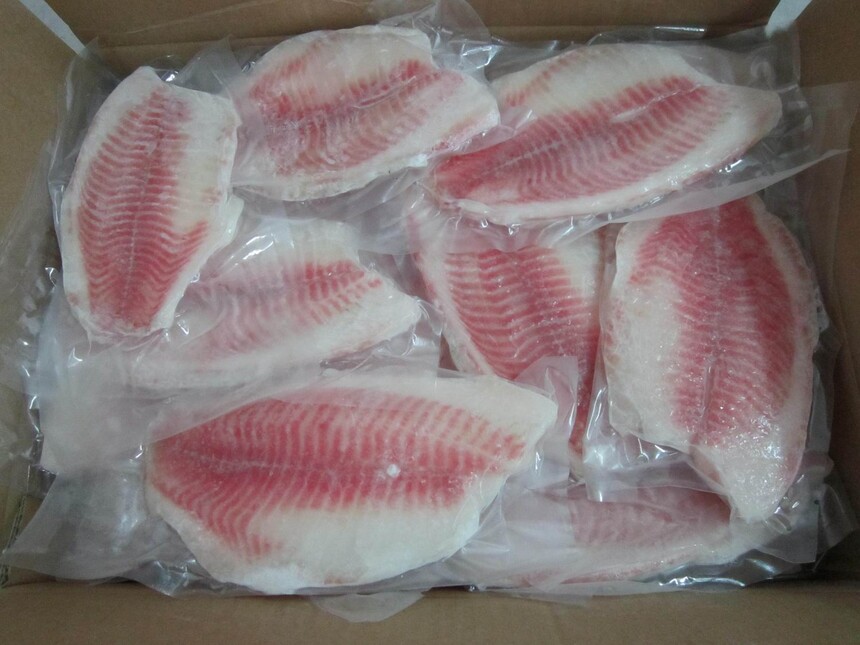|
China Tilapia Supply SituationTilapia Processors taking orders at a loss, competition from pangasius, tariff uncertainties... Is tilapia still worth investing in 2025?
From the perspective of tilapia market conditions and profits, in September 2023, after experiencing a two-year slump, the stock of tilapia in ponds continued to decrease, tilapia prices rebounded steadily, and tilapia farmers' profits further improved. Particularly in 2024, against the backdrop of low tilapia raw material costs and favorable fish prices, the profit from tilapia farming exceeded 1 yuan per jin for 10 consecutive months, with the highest profit reaching 1.7 yuan per jin. However, as new batches of fish were gradually put on the market, prices and profits began to decline.
Looking at the current stock in ponds and fry stocking situation in major producing areas, most tilapia nationwide are under 6 liang (300g) in size. Due to the year-on-year increase in fry stocking in the fourth quarter of last year, the stock of tilapia over 1 jin (500g) has increased by 15% year-on-year. Regarding fry stocking: tilapia farmers actively stocked fry from the fourth quarter of last year to the first quarter of this year. From April to May, fry stocking almost came to a halt due to Sino-US tariffs. After China and the US mutually reduced tariffs on May 12, end-stage farmers resumed active stocking, with demand for high-quality fry rising rapidly. Overall, the total fry stocking volume showed a slight downward trend. In the short term, since most stocked tilapia are currently 6 liang to 1 jin in size, they will gradually reach marketable size from July to August, ensuring sufficient market supply.
Reviewing tilapia farming volume over the past decade: In 2015, Chinese tilapia faced simultaneous sluggish consumption in markets such as the US, Japan, and Europe, leading to a full-scale backlog in aquatic product exports. Tilapia prices and farmers' profits continued to decline. In 2017, China's tilapia industry ended its over-decade-long rapid growth. Coupled with the 2018-2019 Sino-US trade war, tilapia entered a five-year period of volatility. In 2021, against the backdrop of long-term de-capacity, tilapia prices rose steadily, and farmers' profits improved gradually, driving continuous growth in tilapia farming output from 2022 to 2024.
From 2020 to 2024, tilapia farming volume maintained steady growth. In 2024, the farming volume is expected to reach 1.9 million tons, an increase of 14% from 1.66 million tons in 2020, with a compound annual growth rate of approximately 3%. Among China's major tilapia-producing regions, the top four provinces in terms of farming volume are Guangdong, Hainan, Guangxi, and Yunnan. In 2023, the total tilapia farming volume in these four provinces was about 1.642 million tons, accounting for 90% of the national total. Guangdong ranked first with a farming volume of approximately 778,000 tons in 2023, making up 43% of the national total. All four provinces showed significant growth, with Hainan, where tilapia farming has a relatively high proportion, seeing a 26% increase in farming volume in 2023 compared to 2021.
Looking at tilapia market trends over the past four years: Driven by high profits in 2021, fry stocking increased significantly, leading to sufficient supply in 2022, which caused terminal prices and farming profits to decline continuously. As stocked fish were gradually sold off, tilapia prices began to rise steadily from September 2023, and farmers' profits improved accordingly. Especially in 2024, with low raw material costs and favorable tilapia fish prices, tilapia farming profits exceeded 1 yuan per jin for 10 consecutive months, peaking at 1.7 yuan per jin. Later, as new fish were released to the market, prices and profits started to fall. From March to May 2025, affected by increased US tariffs, farmers' profits dropped to near the cost line. On May 12, China and the US mutually reduced tilapia tariffs, which seemed to stabilize tilapia exports, but uncertainties regarding Sino-US trade tariffs remain 90 days later (counting from May 12), which will affect market conditions and profits.
In terms of current stock sizes in major producing areas: Most tilapia nationwide are under 6 liang. Due to the year-on-year increase in fry stocking in the fourth quarter of last year, the stock of tilapia over 1 jin has risen by 15% year-on-year. By region: In Hainan, about 40% of tilapia are under 6 liang, and 60% are between 6 liang and 1 jin; in Maoming, Guangdong, approximately 50% are under 6 liang, 30% are between 6 liang and 1 jin, and 20% are over 1 jin; in Yunnan, around 30% of fry are under 6 liang, 40% of stocked fish are between 6 liang and 1 jin, and 20% are over 1 jin.
Driven by favorable market conditions, tilapia farmers actively stocked fry from the fourth quarter of last year to the first quarter of this year. From April to May, stocking almost stopped due to Sino-US tariffs. After the mutual tariff reduction on May 12, end-stage farmers resumed active stocking, with demand for high-quality fry surging. A well-known tilapia fry supplier revealed that orders in mid-May far exceeded expectations, with shipments from January to May increasing by 20% year-on-year, while shipments from other fry farms decreased year-on-year. Predictions for regional fry stocking indicate that the total stocking volume in Guangdong and Hainan from January to May decreased by approximately 10-15% year-on-year, and in Yunnan, affected by prolonged low prices, the total stocking volume from January to May dropped by about 20% year-on-year.
As the world's largest tilapia producer, China supplies nearly 70% of its tilapia output to foreign markets, with the US market accounting for about 25%, making it the largest single export market of tilapia. On May 12, China and the US mutually reduced tariffs, which seemed to stabilize tilapia exports, but three pressures remain:
From the sales side: tilapia processors are currently receiving more tilapia orders and, with government subsidies, are mostly operating at full capacity, and are expected to continue purchasing tilapia fish steadily. In the market, due to sluggish consumption, tilapia supply and demand are expected to remain stable. From the tilapia supply side, since most stocked tilapia are currently 6 liang to 1 jin in size, they will reach marketable size from July to August, ensuring sufficient market supply of tilapia.
Pls contact us for tilapia orders:
Blue Sea Fishery Co., Ltd. E-mail: sales@blueseafishery.cn Tel: 0086-131-5609-5220 Wechat: DORIS86789
We supply frozen tilapia fillets, tilapia gutted and scaled, tilapia whole round of all sizes(Oreochromis Niloticus ). We can export our tilapia to USA, Meixco, EU markets etc.
Welcome to cooperate with us.
Blue Sea Fishery-China Tilapia Supplier, China Tilapia Fillets Supplier, China Tilapia Producer, China Tilapia manufacturer, China Tilapia seller, China Tilapia Exporter, China Tilapia Factory, China tilapia fillets producer, China tilapia fillets manufacturer, China seafood Supplier, China Seafood Exporter, Tilapia fish |




